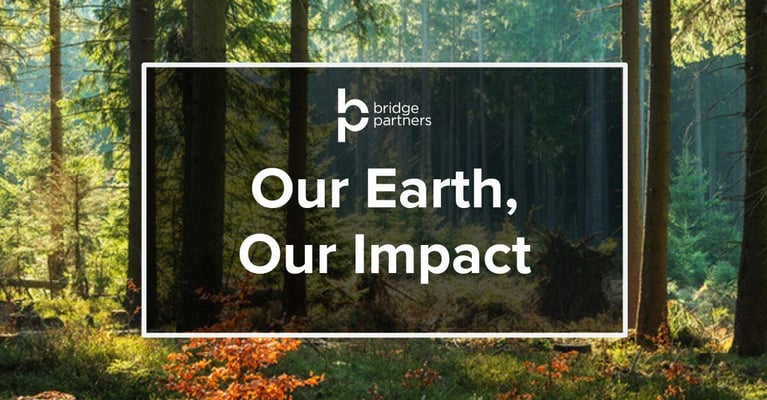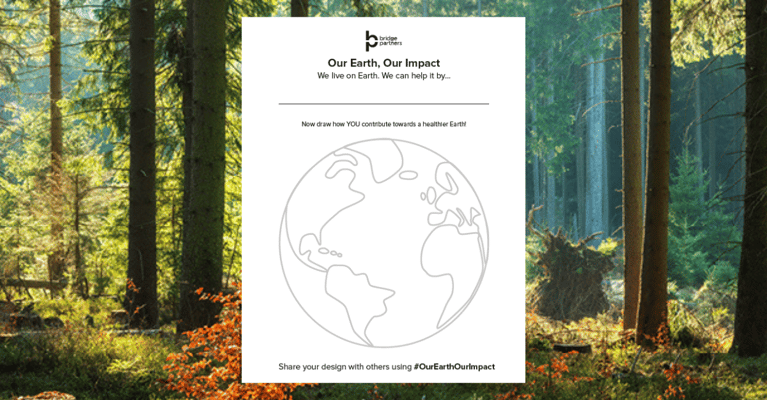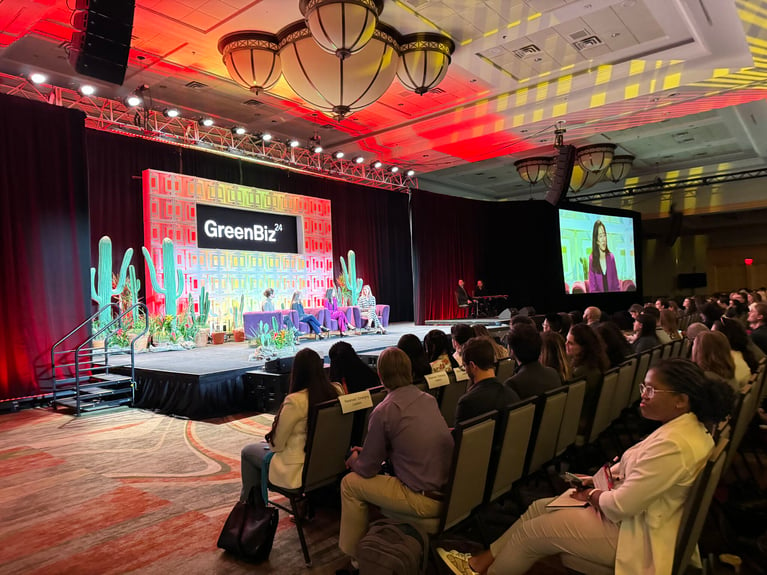The Brave New World of Sustainability: Navigating the Latest Regulations

The Climate Disclosure Landscape is Shifting
Corporate Environmental, Social, and Governance—better known as ESG—was originally a nice-to-have strategy. Public participation in emissions measurement, target setting, and more was once voluntary. Those early days are over: ESG is rapidly becoming a must-have aspect of corporate responsibility.
Now, for the first time, many companies must meet unprecedented regulatory requirements to make climate disclosures. Stakeholders ranging from employees to investors expect to see real progress on sustainability commitments. Intricate and elusive supply chains challenge even the most sophisticated companies to reduce Scope 3 emissions.
Three Key Areas to Focus Sustainability Efforts in 2024
In the face of such dramatic changes and technical challenges, where should you focus your efforts? At Bridge Partners, we see three key areas to focus on in 2024 to ensure you are prepared: emissions measurement and management, supplier engagement, and target setting.
1. Emissions Measurement and Management
You can’t manage what you don’t measure. Mounting regulatory pressure at home and abroad necessitates accurate and consistent measurement and management of carbon emissions annually as part of their filings.
SEC Sustainability Reporting Regulations
In a significant move on March 6, 2024, the Securities and Exchange Commission (SEC) announced pioneering rules concerning mandatory climate risk disclosure. These rules mandate that certain companies must annually disclose material climate risks, as well as their greenhouse gas emissions stemming from direct sources, such as electricity consumption and company-owned fleets.
California Climate Reporting Regulations
Meanwhile, in California, 2023 brought two far-reaching new laws.
- The CA Climate Corporate Data Accountability Act applies to all businesses operating in California with annual revenue over $1B and requires reporting on Scopes 1 and 2 by 2026, and Scope 3 by 2027. These disclosures must also be verified by a third party before submission to the California Air Board.
- The CA Climate-Related Financial Risk Act requires TCFD-aligned framework reporting/disclosure by 2026 for all businesses operating in California with revenue over $500M.
European Sustainability Reporting Regulations
In the EU, large companies and small and midsized enterprises ($150M+ annual EU revenue) will have to report on ESG, consistent with the Corporate Sustainability Reporting Directive (CSRD) and European Sustainability Reporting Standards (ESRS) by 2026.
Engaging Suppliers to Catalyze Carbon Reduction
More than ever, accurate and robust carbon data will now be essential to companies. Many companies will be conducting a greenhouse gas inventory for the first time, including managing the complex verification process.
To be successful, companies will need to commit to an annual, third-party verified greenhouse gas (GHG) inventory.
It’s essential for companies to work with internal teams and external suppliers to get the most accurate data (including energy usage, spend, transportation mileage, etc.) to contribute meaningful data inputs.
To do this well, companies need an inventory management plan (IMP) that lays out methodologies and emissions factors to ensure alignment with the GHG protocol and year-over-year consistency. With complex supply chains and operations, companies should seek an independent methodological review prior to verification to promote accordance with best practices, along with improving verification and disclosure processes.
2. Unlocking Hidden Potential: Supplier Engagement
Engaging Suppliers for Scope 3 Emissions Reduction
Purchased goods and services make up an outsized share of emissions—so the opportunity is vast, but so is the challenge. To address Scope 3, companies will need to launch creative and innovative supplier engagement programs that are tailored specifically to the needs and emissions profile of the organization.
As companies set climate targets and goals, they should share them with their suppliers, even if they aren’t asking anything of them right away. Bringing suppliers along on your own sustainability journey can inspire change and spur innovation.
Education, Enablement, and Action: The Keys to Effective Supplier Engagement
To get suppliers to commit to climate reductions in alignment with your company goals, they will need support and enablement. This means that for your company to realize meaningful emissions reductions, your supplier engagement program must be comprehensive, including education and forward-focused requirements.
A supplier engagement program that is tailored for your specific company and supplier base is most likely to be well received by both internal stakeholders and suppliers. You can start by identifying relevant areas of impact.
From there, you should segment your suppliers to understand where emissions are coming from in your supply chain, as well as identify the greatest opportunities for reduction. Better understanding will help you more effectively focus your attention and investments--no guesswork or over-indexing on suppliers whose emissions are insignificant.
With segmentation complete, you will be poised to reach out to suppliers in both strategic and bite-sized ways that will make meaningful change. For example, a company could choose to require its top 20 suppliers (by carbon or by spend) to submit annual GHG inventory disclosures. At the same time, they could host webinars and office hours for their top 100 suppliers to upskill them on the path ahead to carbon reduction and disclosure.
3. From Commitment to Action: Target Setting
Public-facing sustainability commitments are now expected and common, but they must be realistic. To date, nearly 400 major tech companies have Net Zero commitments with SBTi, and thousands more have some form of public decarbonization commitment. However, many companies are showing little visible progress as their milestones approach. Recently, some companies have even publicly amended their commitments to set more “realistic” goals.
Voluntary frameworks offer the chance to track progress, demonstrate engagement, and share wins. By engaging in voluntary reporting/target-setting frameworks (CDP, DJSI, SBTi, TCFD, etc.) you can boost your sustainability profiles, proactively respond to stakeholders, and position yourself for the inevitable future regulations.
Building Your Sustainability Foundation: The Importance of Materiality Assessments
So how can you set yourself up to succeed? To get started (or to further progress), you should conduct a materiality assessment, ideally one that identifies priorities across both ESG reporting and strategy. This helps ensure that you are prepared to draft a climate plan, along with feasible targets.
Net Zero roadmaps set high-level milestones and mileposts. But without pairing those high-level goals with concrete climate actions, progress can remain elusive. The better choice is to pair high-level emissions reduction goals with climate actions, set against an emissions modeling tool that is informed by your own data.
Bridge Partners, Your Sustainability Partner
Need help? At Bridge Partners we work every day with companies that are facing challenges in this evolving regulatory environment. We offer a range of sustainability consulting services from strategic program design and materiality assessments to GHG management support. Let’s talk. Please get in touch to have a discussion.
About the author

Catherine Coteus
Catherine Coteus is a sustainability leader, with years of experience working with some of the world's largest companies on climate. Catherine specializes in carbon accounting, decarbonization strategies and sustainability program design/ implementation. Formerly of Etsy and Whole Foods, Catherine understands the importance of sustainability work that is brand-aligned and strategic. Here at Bridge, Catherine leads our team of subject matter experts and oversees deliver of technical client work around waste, water, carbon and more.


